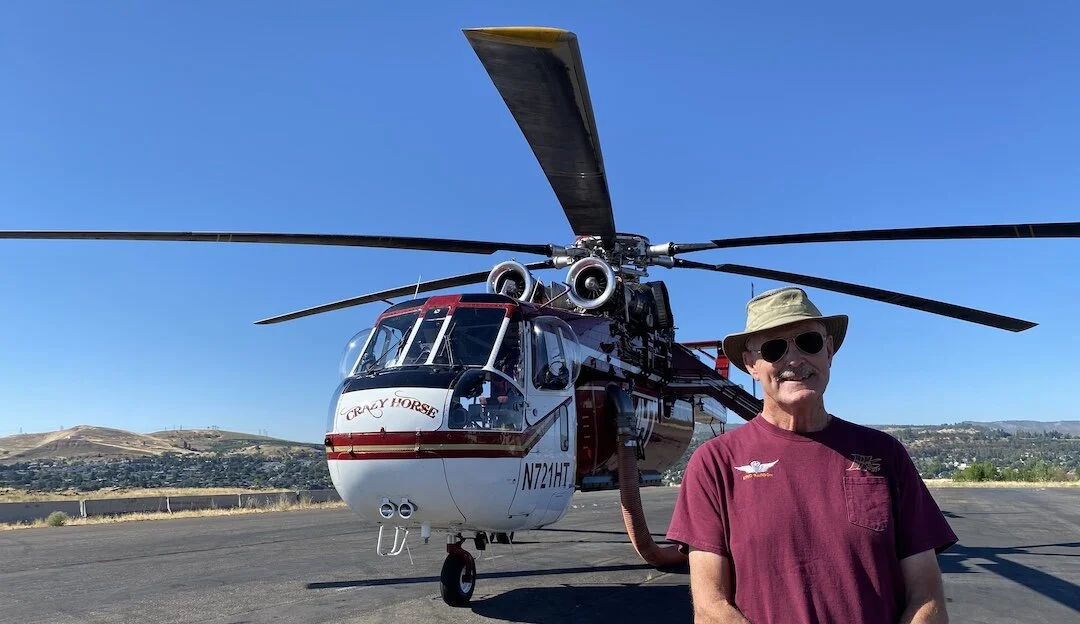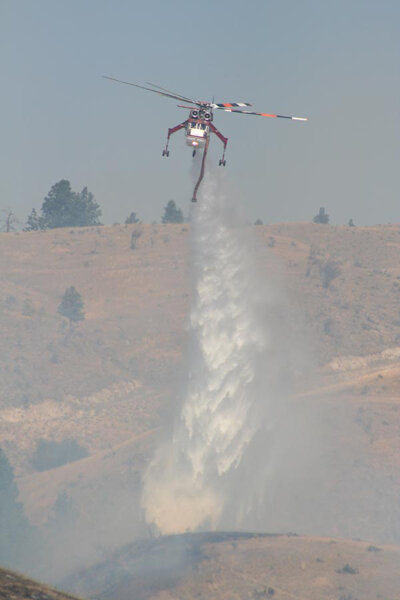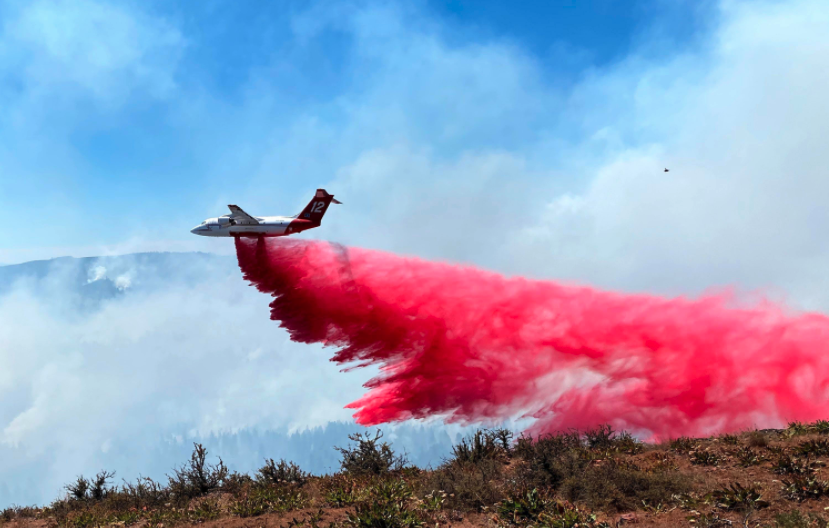On Target with 8 Tons of Water - Battling Fire In Warm Springs
Captain Eric Rairdon with Helicopter Transportation Services out of Aurora, Ore., began his flying career in Vietnam in Hueys and OH-6 helicopters. He is now dumping water on flames in Warm Springs today in this 1969 Sikorsky named “Crazy Horse”. He began fighting fires for the company in 2012.
Helicopter Transport Services in action.
By Tom Peterson
When you’re dropping 1,500 gallons of water on flames, you better keep your hand on the collective or your Sikorsky helicopter will pop up like a cork in an ocean.
“We try to be a bit smoother than that,” said Captain Eric Rairdon who is battling the blaze in Warm Springs with co-pilot Donald Cabral.
Rairdon was preparing for another day of firefighting today, June 21, when we caught up with him and his crew at the Columbia Gorge Regional Airport in Dallesport at 9 a.m.
Looks like they have their work cut out for them. Temperatures are predicted to top 100 degrees and humidity is going to be around 21 percent today.
The grass fire is officially called the S503 Fire after a nearby road. The two pilots and their crew of three mechanics and a fuel truck driver have been working to douse flames there since Saturday. They are stationed at the regional airport.
Some estimated 6,000 acres have burned without harm to humans or buildings, according to reports thus far.
This is the view Capt. Eric Rairdon and co-pilot Donald Cabral have as they hone in on flaming targets at Warm Springs.
They are flying a retrofitted 1969 Sikorsky CH-54B, with twin jet engines to drive the rotors and craft at 100 plus miles per hour.
“We are there to support the ground crew,” Rairdon said, pointing out that fireline crews are typically the ones who contain and squelch a fire.
“We slow it down so ground crews can get them surrounded,” he said.
His company Helicopter Transport Services (HTS) out of Aurora, Oregon, take their orders either from the Incident Commander or ground crews who have strategized on how to hem a fire in to bring it under control. Spotter planes fly reconnaissance in the morning to gain information on how to best battle the blaze.
HTS is contracted through the US Forest Service to do the work.
“We work sections and put out hotspots,” he said, noting embers can be lifted by the wind and ignite secondary fires miles from the original conflagration.
“We’re very good at working those,” he said.
The Sikorsky Rairdon and Cabral are flying carries 1,200 gallons of aviation fuel and can stay aloft for more than 2 hours between fuel refills at Dallesport.
Pilots can be in the air just 8 hours a day, so essentially they fill the tank four times in a day’s work.
They are lifting some 16,000 pounds of water at a time. It takes literally tons of energy.
Their Sikorsky is fitted with a snorkel that dangles underneath it for filling the water tank. Rairdon said they have been drawing from a small pond near the fire for the past several days. It takes just 60 seconds to fill the tank as they hover in the air. A hydraulic pump on the craft can create an immense suction for drafting water.
Location of the S503 Fire at Warm Springs.
The water tank is separated into four chambers and all or just one can be opened as is needed to squelch a target.
Rairdon said putting the water where it is needed was a real challenge as they have to adjust for wind, topography and their own speed to hit flames.
The current fire was not providing too much difficulty as much of the terrain is on low rolling hills.
He said they often use the draft of smoke off the fire to gauge how to compensate for the wind to hit their bullseyes.
It is going to be a long fire season in the Northwest, he said.
“As dry as it is in the Northwest, it’s going to be quite busy.” There is a lack of firefighting equipment such as this Sikorsky which is in high demand, he said.
Retardant drop at Warm Springs fire earlier today, June 21.
Fires are off and running in Oregon.
The Statesman Journal reported today that two other fires are burning.
In Southern Oregon, the fast-moving Cutoff Fire was estimated at 1,000 acres. It was threatening 125 homes and brought level 3 evacuations in the Bly Mountain area near Highway 140 in Klamath County, the story stated.
Also in Southern Oregon, the North River Road Fire, a grass fire burning near Interstate 5 outside Gold Hill, was estimated at 60 acres, 5% contained, and level 1 evacuations were issued, it said.






